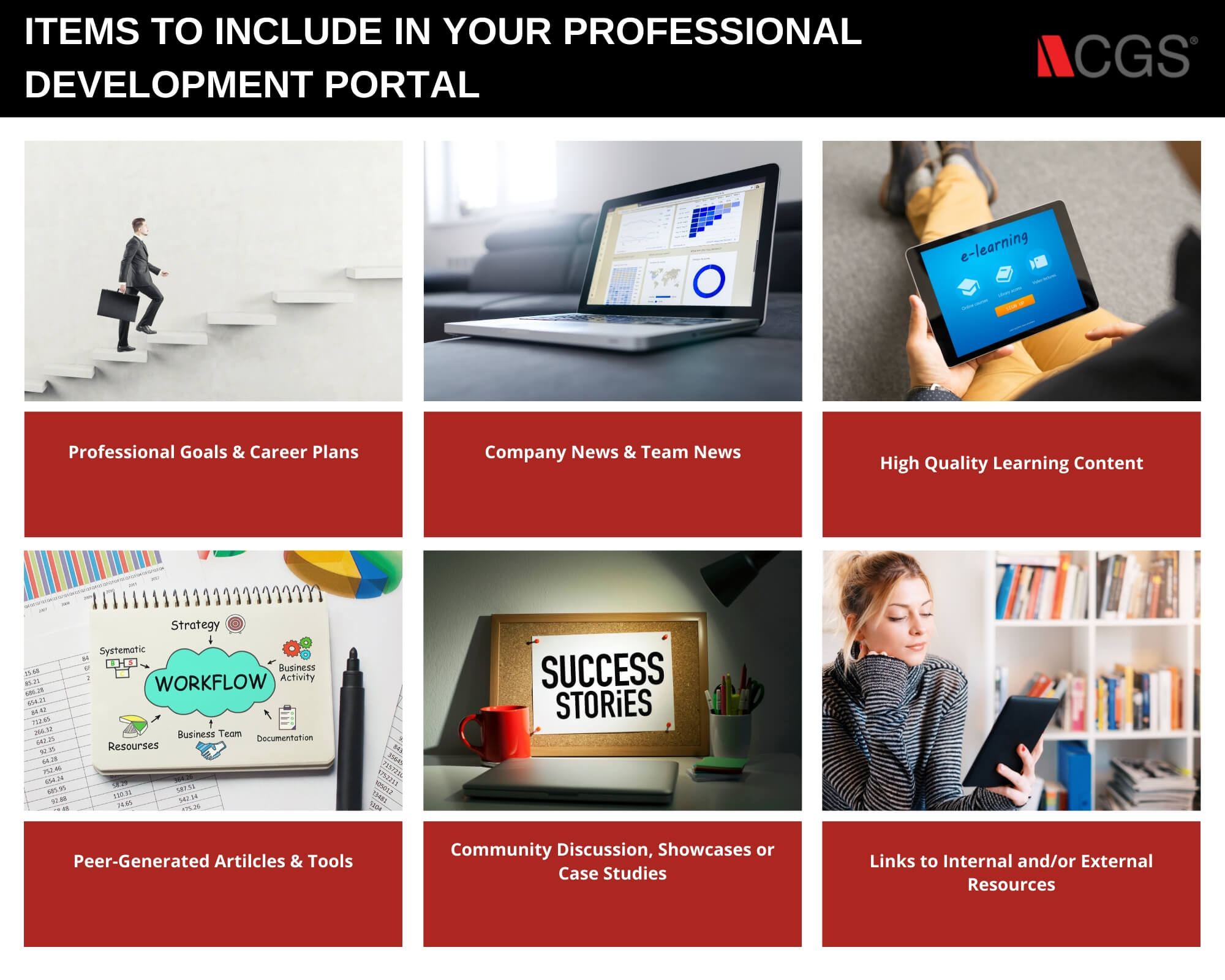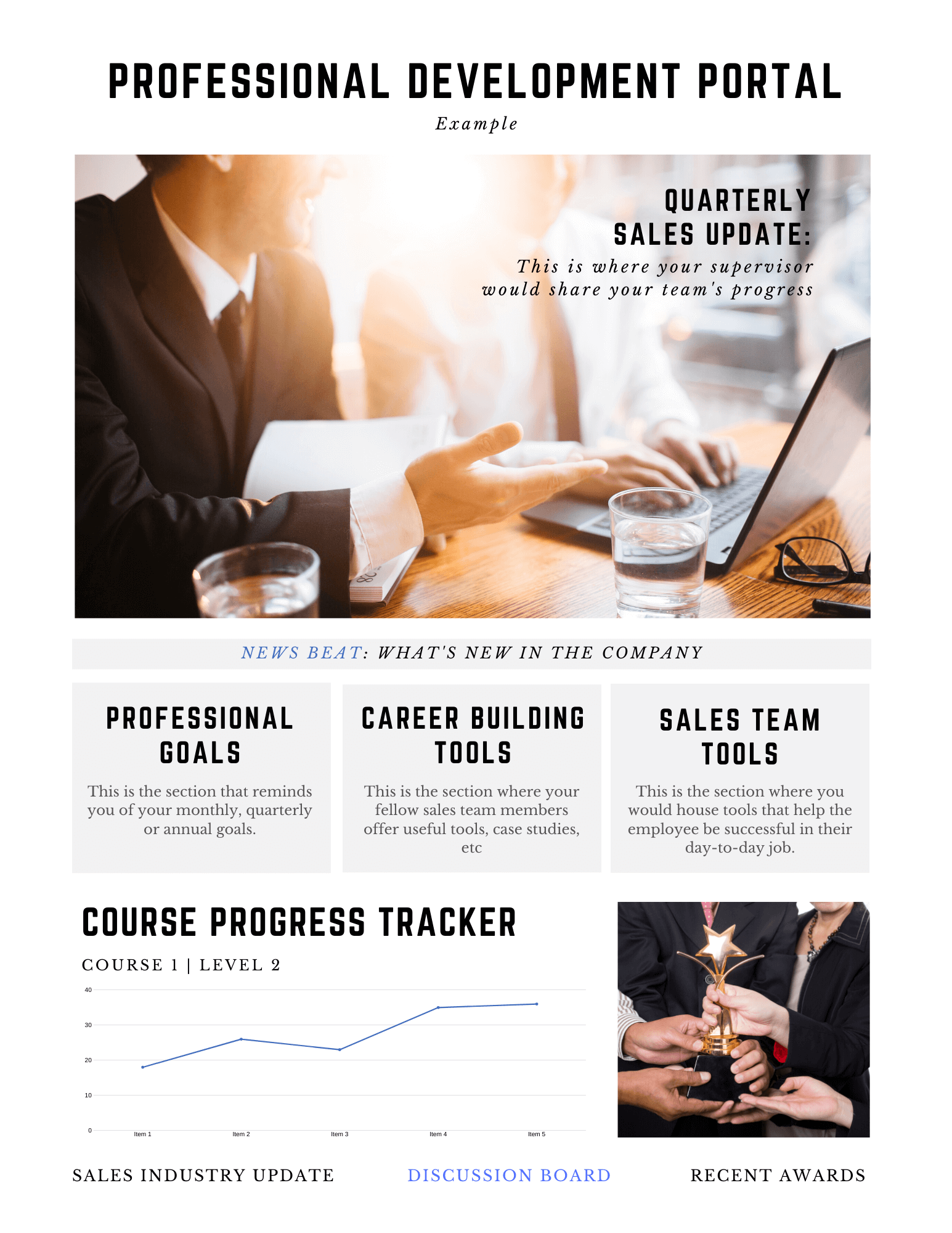
Jon Green has 20 years experience in designing innovative learning experiences and leading teams of learning practitioners. Jon is the Operations Manager at CGS Enterprise Learning.
Topics
3 Tips for Taking Your Professional Development Portal to the Next Level

Why a Professional Development Portal is Critical for a Corporate L&D Program
It is well established that professional development opportunities are an important part of employee retention. Most professionals already update and expand skills on a just-in-time basis as needs arise. But those efforts are often uneven across a group of employees, as are the results. A professional development portal provides a consistent, curated experience and set of expectations for employees that increases the overall quality and effectiveness of the learning experience.

1. How to Structure & Organize Your Development Portal
One word: Personalize.
The options listed below require an extra layer of development that may involve outside technical resources but they deliver more relevant content and value to employees. As you plan your structure, plan to include easy access to:
- Day-to-day Tools
- Departmental News
- Team Discussion Boards
- Peer-generated articles and tools
- Case Studies
- Integrations (social channels, APIs to important tools, videoconferencing, etc.)
- Professional Development Tools
- Professional Goals
- Professional Achievements or Milestones
- Suggested coursework
- Progress tracker for your coursework
- Succession Plan and/or timeline for a promotion
- Educational support for emerging technologies
- Free professional development external resources
- Professional Development tip of the day
- Feedback/Suggestion box on your personal improvement
- Recent news about professional development for your specific title

2. Timeline for Building a Professional Web Portal
The portal itself doesn’t take long to create as there are many tools available that allow you to build sites from pre-made themes, widgets, and templates.
Architecting the framework for the site and assembling or creating the content will take most of the time. The first iteration for a simple site could take a week whereas a complex site could take months.
It’s also important to ensure that you involve the right stakeholders when building your web portal. Current research shows that IT Leadership is involved in 33% of L&D projects while CTO’s are only involved in 7% of projects. Approach IT from the perspective of the problem you are trying to solve, not just the type of platform you want. In this case, your goal is to design a web portal that provides your employees with the skills they need in real-time. Make sure that your goals tie back to Learning & Development Metrics that actually matter to the C-suite. Make sure you speak their language to ease conversations and understanding. An updated IT requirements document is critical. This will help with security as well as testing your web portal.
Be sure to include stakeholders outside of IT in your timeline for building the portal. If you are a large organization, you may consider involving your Diversity Leader, Technical Training team, Internal Communications and your Marketing Team. For a full list of potential leaders to include in your web development portal creation, consider the 7 Roles Essential to Your Learning Organization.
3. How Should a Portal Be Managed Once it is Deployed?
Launching the portal is not the end of the process – it’s the beginning. The portal has to be managed to ensure that it is kept relevant for the professional audience. This is not a purely technical task. It’s important to establish a good steering committee to manage the portal. This committee would consist of the following:
- Practice leaders – You need people from the organization who are passionate about continuous learning and are able to establish goals for the initiative and interface with both management and practitioners in order to deliver on these goals.
- Respected practitioners – In order to ensure adoption of the portal, it is important to identify and include influential practitioners. The contributions of these practitioners in terms of design input and content submissions will lend much needed credibility to the initiative.
- Technical/Creative resources – Good technical resources can be as important to the success of the portal as the content made available through it. Technical resources versed in UX design can ensure intuitive access to content and other resources. Web developers can ensure that updates are tested and actually work when launched.
They will be the key in managing the portal and evangelizing its benefits within the larger community.

Jon Green has 20 years experience in designing innovative learning experiences and leading teams of learning practitioners. Jon is the Operations Manager at CGS Enterprise Learning.

